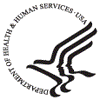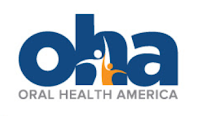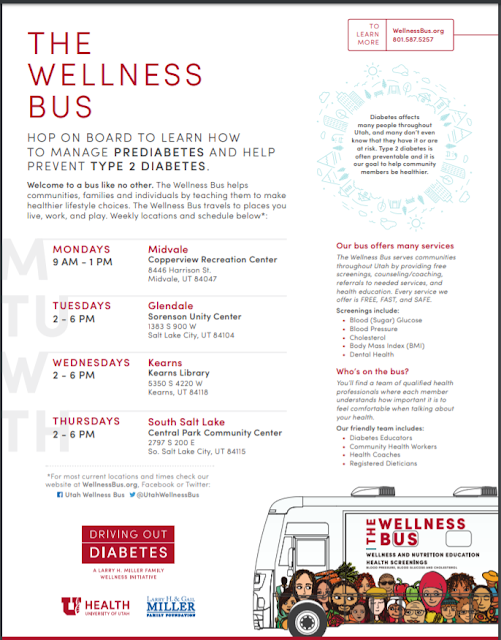Thursday, December 20, 2018
Wednesday, December 19, 2018
Surgeon General releases advisory on E-cigarette epidemic among youth
U.S. Surgeon General Vice Adm. Jerome M. Adams issued an advisory today stressing the importance of protecting children from a lifetime of nicotine addiction and associated health risks by immediately addressing the epidemic of youth e-cigarette use.
 E-cigarette use among youth has skyrocketed in the past year at a rate of epidemic proportions. According to data from the Centers for Disease Control and Prevention and the Food and Drug Administration’s National Youth Tobacco Survey, the percentage of high school-age children reporting past 30-day use of e-cigarettes rose by more than 75 percent between 2017 and 2018. Use among middle school-age children also increased nearly 50 percent.
E-cigarette use among youth has skyrocketed in the past year at a rate of epidemic proportions. According to data from the Centers for Disease Control and Prevention and the Food and Drug Administration’s National Youth Tobacco Survey, the percentage of high school-age children reporting past 30-day use of e-cigarettes rose by more than 75 percent between 2017 and 2018. Use among middle school-age children also increased nearly 50 percent.
Data from National Institutes of Health’s Monitoring the Future survey also shows that America’s teens reported a dramatic increase in their use of e-cigarettes in just a single year, with 37.3 percent of 12th graders reporting use in the past 12 months, compared to 27.8 percent in 2017.
“We need to protect our kids from all tobacco products, including all shapes and sizes of e-cigarettes,” said Adams. “Everyone can play an important role in protecting our nation’s young people from the risks of e-cigarettes.”
The surge in e-cigarette use among our nation’s youth has been fueled by newer cartridge-based devices that have become increasingly popular. Many of these e-cigarettes look like a USB flash drive, making them easy to conceal. One of the most commonly sold versions is JUUL, which now has more than a 70 percent share of the cartridge-based e-cigarette market in the United States. A typical JUUL cartridge, or “pod,” contains about as much nicotine as a pack of 20 regular cigarettes.
“In the data sets we use, we have never seen use of any substance by America’s young people rise as rapidly as e-cigarette use is rising,” said HHS Secretary Alex Azar. “Combustible cigarettes remain the leading cause of preventable death in the United States, and providing an effective off-ramp for adults who want to quit using them is a public health priority. But we cannot allow e-cigarettes to become an on-ramp to nicotine addiction for younger Americans. HHS has been and will continue developing a comprehensive, balanced policy approach to this challenge.”
As noted in the 2016 Surgeon General’s report on E-cigarette Use Among Youth and Young Adults, e-cigarette use poses a significant – and avoidable – health risk to young people. Besides increasing the possibility of addiction and long-term harm to brain development and respiratory health, e-cigarette use may also lead to the use of regular cigarettes that can do even more damage to the body.
“We have evidence-based strategies to prevent tobacco use that can be applied to e-cigarettes.” said Adams. “We must take action now to protect the health of our nation’s young people.”
For facts about the risk of e-cigarettes, and how to protect our youth, visit: e-cigarettes.surgeongeneral.gov.
###
Labels:
Data and Reports,
Events
HHS recommends prescribing or co-prescribing naloxone to patients at high risk for an opioid overdose
HHS recommends prescribing or co-prescribing naloxone to patients at high risk for an opioid overdose
|
 Adm. Brett P. Giroir, MD, assistant secretary for health and senior advisor for opioid policy, today released guidance for healthcare providers and patients detailing how naloxone – the opioid overdose reversal drug – can help save lives and should be prescribed to all patients at risk for opioid complications, including overdose. Adm. Brett P. Giroir, MD, assistant secretary for health and senior advisor for opioid policy, today released guidance for healthcare providers and patients detailing how naloxone – the opioid overdose reversal drug – can help save lives and should be prescribed to all patients at risk for opioid complications, including overdose.“Given the scope of the opioid crisis, it’s critically important that healthcare providers and patients discuss the risks of opioids and how naloxone should be used in the event of an overdose,” said Adm. Giroir. “We have begun to see some encouraging signs in our response to the opioid crisis, but we know that more work is required to fully reverse the decades-long epidemic. Co-prescribing naloxone when a patient is considered to be at high risk of an overdose, is an essential element of our national effort to reduce overdose deaths and should be practiced widely.” To reduce the risk of overdose deaths, the guidance released today reinforces and expands upon prior CDC guidelines. It recommends that clinicians prescribe or co-prescribe (prescribed in conjunction with additional medication) naloxone to individuals at risk for opioid overdose, including, but not limited to: individuals who are on relatively high doses of opioids, take other medications which enhance opioid complications or have underlying health conditions. By co-prescribing, or prescribing naloxone to at risk individuals, patients and their loved ones could be better equipped for a possible complications of overdose, including slowed or stopped breathing. Clinicians should also educate patients and those who are likely to respond to an overdose, including family members and friends, on when and how to use naloxone in its variety of forms. Naloxone is an FDA-approved medication that can save a person’s life when administered during an opioid overdose. Naloxone reverses the effects of opioids, such as stopped or slowed breathing. However, for naloxone to revive individuals who have experienced an opioid overdose, it must be in the right hands at the right time and administered within minutes of life-threatening symptoms. Naloxone is available in a variety of forms (nasal spray, injection, auto-injector); and at least one form is covered by most health insurance plans, including Medicaid and Medicare. “Promoting the targeted availability and distribution of overdose-reversing drugs is one of the five pillars of HHS’s comprehensive, science-based strategy for the opioid epidemic,” said Health and Human Services Secretary Alex Azar. “This new guidance reflects our commitment to ensuring those who need overdose-reversing drugs have them and provides practical steps that clinicians, patients, and the public can take to reduce the risk of an overdose.” In April 2017, HHS announced its 5-Point Strategy to Combat the Opioids Crisis. Those efforts include: better addiction prevention, treatment, and recovery services; better data; better pain management; better targeting of overdose reversing drugs; and better research. In April 2018, Surgeon General VADM Jerome Adams issued an unprecedented advisoryencouraging more individuals, including family, friends, and those who are personally at risk for an opioid overdose to carry naloxone. Today’s guidance will bolster HHS’ ongoing efforts to combat the opioid crisis and expand the use of naloxone. To view the guidance, click here. To learn more about HHS’s efforts to combat the opioid crisis, visit www.hhs.gov/opioids. |
###
|
Labels:
Events,
Front Page News
Friday, December 14, 2018
Thursday, December 13, 2018
2019 Open Enrollment is here – and ends Dec 15
You can enroll in or change 2019 Marketplace health insurance right now. The 2019 Open Enrollment Period runs from Thursday, November 1, 2018, to Saturday, December 15, 2018.
 IMPORTANT: 2019 Open Enrollment ends December 15
IMPORTANT: 2019 Open Enrollment ends December 15
If you don’t act by December 15, you can’t get 2019 coverage unless you qualify for a Special Enrollment Period. Plans sold during Open Enrollment start January 1, 2019.
If you don’t act by December 15, you can’t get 2019 coverage unless you qualify for a Special Enrollment Period. Plans sold during Open Enrollment start January 1, 2019.
Labels:
Events,
Healthcare Access
Wednesday, December 12, 2018
Action for Dental Health Act signed into law
Today, President Trump signed into law the Action for Dental Health Act, a bipartisan bill aimed at improving oral health and access to oral health care.
H.R. 2422, introduced by Reps. Robin Kelly (D-IL) and Mike Simpson (R-ID) passed the House in February; in October, it passed the Senate, where it was sponsored by Sens. Cory Booker (D-NJ) Bill Cassidy (R-LA) Mazie Hirono (D-HI), and Tim Scott (R-SC).
The Action for Dental Health Act amends the Public Health Service Act to reauthorize oral health promotion and disease prevention programs through FY2022. Significantly, it expands eligibility of the types of organizations able to apply for Health and Human Services (HHS) grants to improve oral health through education and dental disease prevention. The grants will also be used to develop and expand outreach programs, establish dental homes for children and adults, including the elderly, blind and disabled and facilitate the provision of dental care to nursing home residents.
“This legislation is encouraging and signals oral health is a priority of Congress. Increasing oral health education and preventive oral health programs will be key to improving early diagnosis, intervention and prevention programs for our communities,” says Beth Truett, President and CEO of Oral Health America, “OHA is eager to work alongside its partners and members of Congress to improve oral health outcomes for all.”
Labels:
Events,
Healthcare Access
New Youth Risk Behavior Surveillance System Analysis Tool Released
Today, the Division of Adolescent and School Health (DASH) released a Youth Risk Behavior Surveillance System (YRBSS) Analysis Tool as an enhancement to the Youth Online data analysis tool that provides users with easy access to data on health-risk behaviors that contribute to the leading causes of death and disability among youth and adults. The YRBSS Analysis Tool can be accessed through Youth Online which can be found on the Youth Risk Behavior Survey (YRBS) website at www.cdc.gov/healthyyouth/data/
The release includes:
A New YRBSS Analysis Tool that allows users to explore YRBSS and Global School-based Student Health Survey (GSHS) data in more detail by conducting cross tabulation analyses that compare data for two variables, with the option of stratifying the results by year, site, demographic variables or sexual orientation.
Youth Online Background:
Youth Online allows users to analyze national, state, and local YRBSS data from high school and middle school surveys conducted during 1991-2017 and GSHS data from students aged 13-17 conducted during 2003-2015. YRBSS data can be filtered and sorted on the basis of race/ethnicity, sex, academic grade, and sexual orientation while GSHS data can be filtered and sorted on sex and age. Additionally you can filter and sort both surveys by location and year, create customized tables, maps, graphs, and perform statistical tests by location and health topic.
For more information about YRBS:
- Web site: www.cdc.gov/healthyyouth/data/
yrbs - Phone: 1-800-CDC-INFO (1-800-232-4636)
- Email: nccddashinfo@cdc.gov
Labels:
Data and Reports
Tuesday, December 11, 2018
Healthy People public comment period open until January 17, 2019

The U.S. Department of Health and Human Services (HHS) is soliciting written comments on the proposed objectives for Healthy People 2030. This public comment period will allow comments on the proposed HP2030 objectives and members of the public can also propose their own objectives.
Previous public comments on the proposed Healthy People 2030 framework helped shape the vision, mission, foundational principles, plan of action, and overarching goals for Healthy People 2030. In this public comment period, HHS would like input on the proposed Core, Developmental, and Research objectives.
In response to stakeholder input, Healthy People 2030 will be a streamlined set of national health objectives guiding the Nation in efforts to improve health. Healthy People 2030 will continue to represent critical public health priorities by addressing the leading causes of morbidity and mortality and driving action at the national, state, and local levels.
Members of the public are invited to submit comments on the proposed objectives from December 3, 2018, to January 17, 2019. Learn more and submit your comments today!
Labels:
Data and Reports,
Events
Tuesday, December 4, 2018
The Utah Health Improvement Index: A New Tool to Advance Health Equity
Developed by the Utah Department of Health (UDOH), the Utah Health Improvement Index (HII) is a measure of health equity. It includes nine indicators that describe important aspects of demographics, socioeconomic deprivation, economic inequality, resource availability, and opportunity structure.
Those indicators are:
• Population aged ≥25 years with <9 years of education, %
• Population aged ≥25 years with at least a high school diploma, %
• Median family income, $
• Income disparity
• Owner-occupied housing units, % (home ownership rate)
• Civilian labor force population aged ≥16 years unemployed, % (unemployment rate)
• Families below poverty level, %
• Population below 150% of the poverty threshold, %
• Single-parent households with children aged <18 years, %
The HII is based on Utah Small Areas (geographic areas based on ZIP codes, local health districts, county boundaries, and input from local community representatives). The new small areas were released by UDOH in October 2018. There are 99 small areas in Utah.
The 99 small areas are categorized into five groups: very low (20 areas), low (25), average (18), high (20), and very high (16) health improvement areas. The HII ranks from 71.89 to 160.87. The higher the ranking, the more improvements the area needs.
This classification can be used as a guide to determine the type of intervention to implement in order to advance health equity and reduce, in an efficient and effective way, the burden of diseases and health conditions in specific geographic areas.
The HII is the result of a collaboration project between the Office of Health Disparities and the Bureau of Health Promotion. More information about the HII and its practical applications will be available soon.
Labels:
Data and Reports,
Events,
Healthcare Access,
Training
Monday, December 3, 2018
Utah's Office of Health Disparities at APHA
 The Utah Department of Health Office of Health Disparities (OHD) was chosen among many applicants to present at this year's American Public Health Association (APHA) Annual Meeting & Expo about the It Takes A Village Project. It Takes a Village is a community education and engagement series specifically designed for Utah's Native Hawaiian/Pacific Islander communities who are facing birth outcomes disparities.
The Utah Department of Health Office of Health Disparities (OHD) was chosen among many applicants to present at this year's American Public Health Association (APHA) Annual Meeting & Expo about the It Takes A Village Project. It Takes a Village is a community education and engagement series specifically designed for Utah's Native Hawaiian/Pacific Islander communities who are facing birth outcomes disparities.The presentation titled "It Takes a Village: Giving Our Babies the Best Chance" was offered by OHD's Brittney Okada, MPH, CHES on Wednesday, November 14. Participants were interested in learning about how OHD developed this unique curriculum and utilized specific cultural concepts to present key health concepts. Participants from around the country were also interested to learn how Utah disaggregates data and how large the NHPI community is here. Learn more about the ITAV project and view the curriculum.
Labels:
Disparities Office,
Events
Oral Health America Webinar Series: Oral care for infants and toddlers
 Inspiring and Innovative Preventive Oral Care for Infants and Toddlers
Inspiring and Innovative Preventive Oral Care for Infants and Toddlers Presenter: Hamida Askaryar MPH, RDH, MCHES
December 12, 2018 at 2:00 PM CST
This session will focus on minimally invasive preventive oral health care for infants and toddlers, the value of interprofessional medical/dental community partnerships, and the six-step care process including motivational interviewing to selecting self-management goals to achieve improved health outcomes.
Key points:
- Prevalence of early childhood caries and why we need to address it
- Early establishment of a dental home y 12 months- bio-behavioral model (“Age one visit”)
- Systemic-oral health link
- Medical-dental integration models
- Caries risk assessments using Caries Management by Risk Assessment (CAMBRA)- and risk-based combination therapies
- White spot lesions- what can providers and parents do?
To Register: https://attendee.
Labels:
Baby Health,
Events,
Training
Subscribe to:
Comments (Atom)








